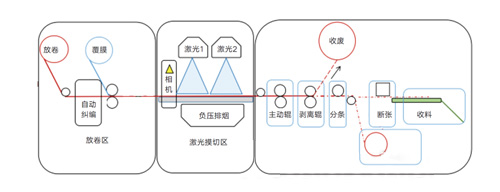Process Characteristics Metallic etching imitates a frosted effect using textured inks on gold and silver paper, where the texture’s coarseness and feel depend on the ink used, allowing limited adjustments during operation. The fabric texture technique, based on metallic etching, incorporates elements from embossed techniques by using uniformly dispersed dot patterns instead of solid colors. This allows for a fabric-like texture effect similar to frosted finishes, with customizable texture size and shape through the film used. Various inks, including pearlescent and color-changing inks, can be employed, enhancing aesthetic value.
Plate Making Creating high-quality screen plates is crucial for achieving excellent fabric texture printing. Key considerations include ensuring adequate spacing between prints to accommodate registration needs, as the texture film differs from solid designs. The screen tension should be between 20-23N/cm for a 300 mesh/inch screen to prevent issues like elongated prints and color inconsistency. The thickness of the photoemulsion layer should be uniform to avoid affecting print quality. Accurate exposure times must be recorded for different mesh counts, allowing for data-driven future work.
For dot-based fabric texture products, improper matching of screen mesh and line counts can lead to moiré patterns, particularly as mesh count increases. Adjusting exposure angles during printing can mitigate this issue. Two methods for angle adjustment are “tilted stretch with straight exposure” and “straight stretch with tilted exposure,” the latter being preferable due to ease of adjustments. After exposure, the screen should be developed using high-pressure, low-flow sprayers to prevent incomplete or washed-out dots. Before printing, check the completeness of the design and the integrity of the dots, making repairs as needed.
Inks Various inks can be selected for screen printing fabric textures, depending on design needs. For products with solid base colors complemented by fabric textures, colored pearlescent or color-changing inks are suitable. For direct printing on gold or silver paper, clear frosted inks work best. When choosing inks, consider the “mesh passage rate”; low rates can lead to incomplete dots after multiple prints. Opting for non-clogging UV inks reduces the need for frequent screen cleaning, making the process safer and more eco-friendly.
Paper To enhance product quality, many packaging designs now use coated gold or silver paper. The color of the ink impacts the final output, especially with clear inks, which reflect the paper’s color. Variations in paper color can lead to inconsistent printing results, so color should be included in material quality checks during procurement.
Explore our book printing services on the Printing in China page.
Printing Considerations As screen printing progresses, the emulsion layer on the screen thins, affecting print quality after a certain number of uses. Regular checks on sample prints are necessary to determine when to replace screens. Cleaning capabilities of screens are inferior for fabric textures compared to solid designs; dust may accumulate, impacting quality. To minimize issues, avoid paper dust during cutting and employ dust-free UV offset printing in related processes.
For products using frosted inks, ensure hot stamping and varnishing processes occur after offset and before screen printing to avoid issues with adherence and uniformity.

Comments
No comments yet. Be the first to react!